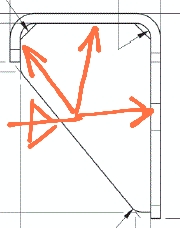The only other way to weld all around is to clip enough of the corners to give ample access for the welder to wrap them. The only time I've done this is when the member is galvanized, where a larger clipped corner allows the galvanizing to flow freely, which keeps it from globbing up at the inside corners and makes it easier for the welder to wrap the corners. If you have to fill the clipped corners, only clip enough corner to clear the radius of the member they're welded to, which should make it easier to weld and eliminate the need for wrapping, as Al said.
If your quoting department misquoted the labor, was the weld shown to be all around on the drawing they used to estimate the weld labor? If not, you should be able to submit a change order for the additional labor.
You didn't mention the welding code you're using, but D1.8 has specific details about clipped corners of continuity stiffeners, keeping them away from the k area, and I would think that if it's ok to clip more of the corners on a project that's required to meet seismic criteria, it would certainly be acceptable otherwise.



